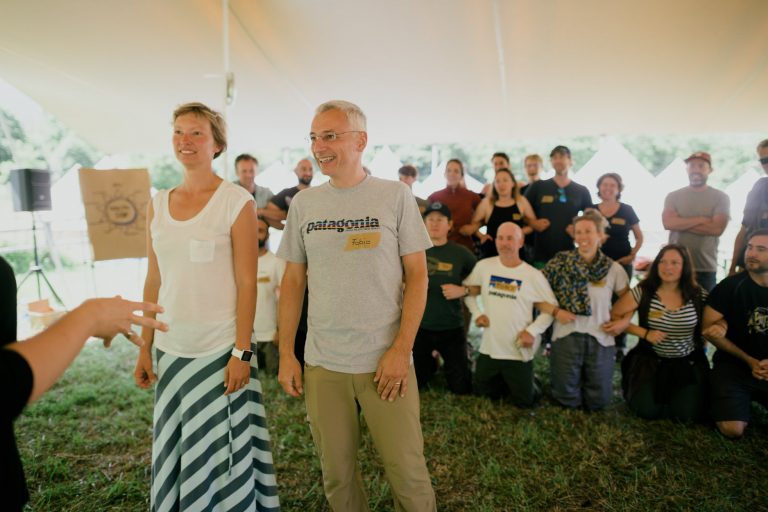Our News
Day 3 – Tools Conference Write-up

Image Credit: Patagonia, 2018
From the 30th May – 2nd June 2018, our Project Coordinator attended the Patagonia Tools for Grassroots Activists Conference in Bosnia and Herzegovina. We were invited to attend at one of Patagonia’s 1% for the Planet NGO grantees.
Day 3
Direct Action
Lucy Mason
Resources:
Tripod
First, we looked at images of various protests and commented on – if we thought the images were showing direct action, whether we thought that action was successful, and if we would personally take part in that action.
This exercise got us thinking about the various ways direct action can manifest, from the legal (e.g. sit-ins and blockades) to illegal (e.g. property damage and vandalism).
It also made us think about the long-term repercussions of that action, both for those taking action and others who might be affected. We considered how some direct action if done in the haste of the moment, without proper planning, or without a discourse to accompany it, might have negative implications for the group you may be trying to help.
Considering what each of us as individuals would be willing to get involved with, and the reasons behind that, was really important to understand the need for inclusivity of a campaign, whether direct action is being used as a tool or not. There may be individuals from all walks of life that are supportive of the work you are undertaking, and who might want to get involved. Enabling them to participate in whatever way they can at that time not only increases your supporter base but builds that individuals’ confidence to a point where in subsequent events or campaigns, they may start to take on a larger role.
We discussed this in the context of a mine occupation to prevent further excavation, and what different roles might look like:
– Key staff and organisers
– Those that want to be directly involved in the occupation
– Those that will support the group above in bringing them supplies, or taking them to the location
– Those that provide support in setting up camp and cooking food
– Legal help after the event should it be needed.
We also talked about the importance of remaining as a strong whole – training beforehand, organisation and clarity of leaders/muster points, not taking ID, all dressing the same, legal support after, strong community.
Takeaways for The Carbon Literacy Project
– Look into the different ways individuals engage with and support us. What other tools could we utilise to make Carbon Literacy more accessible?
Lobbying
Andras Krolopp
Resources:
Lobbying the EU
Point to consider:
– How much do you know about your target?
– Appreciate the scale of your target. Consider how many other people and campaigns are also targeting your target. Will yours stand out from the noise?
– Is it a cause your target cares about?
– Is your target the right person to approach? Get creative and research who would be your best route in.
– Is there someone who would be better suited, better informed, or more sympathetic to your campaign?
– Are you approaching a named individual or a giant public body? Which do you think will be most responsive?
Lobbying can be a very long process. Are you prepared for the time scale and potential costs?
Have you got all the facts?
Have you explained everything as simply as possible, so people understand straight away?
Have you provided them with a vision for the change you want?
Has implementation been planned out? Is it straightforward?
Fundraising
Sonia Castañeda Rial
Resources:
Fundraising Tools Notebook
Remember that there are other budgets other than the environmental ones.
Donors 4 lenses:
– Your issue
– Where you work
– Your values
– Your approach
Things to consider when approaching a donor:
– Do they have money to spare in donations?
– Do they have a history of giving donations or sponsorship?
– What are the causes they already support or care about?
Consider why someone might not donate to you? Have the answers to their questions or concerns so you can respond in an educated and persuasive fashion.
Elevator pitch – What are your success stories? How quickly can you convey your campaign? How quickly can you make someone care about your campaign?
Diversify your fundraising portfolio between the 6 main income streams:
– Face-to-face
– Phone, mail, letters
– Charge fees
– Hold a fundraising event
– Online giving / social media
– Grant proposals
Know how much money the campaign needs per year to run! – Are you meeting this?
Be able to say “this is what we want to do, this is how much it will cost”, to potential donors or in grant applications.
Be transparent about rent and people costs – feed this into your overall budget as part of the overall breakdown.
Remember that money isn’t everything! Though it does help to have financial backing in a campaign, a lot can be done without it.
Takeaways for The Carbon Literacy Project
– Consider where grant applications are being made to – are there non-environmental ones that fit our brief better?
– Are we engaging with the grant process (e.g. emailing and calling the listed contact to build a relationship and understand what the organisation wants from the application).

